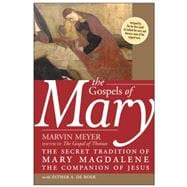
What is included with this book?
The New copy of this book will include any supplemental materials advertised. Please check the title of the book to determine if it should include any access cards, study guides, lab manuals, CDs, etc.
The Used, Rental and eBook copies of this book are not guaranteed to include any supplemental materials. Typically, only the book itself is included. This is true even if the title states it includes any access cards, study guides, lab manuals, CDs, etc.
The Gospels of Mark, Matthew, Luke, and John are the four New Testament Gospels, and the Gospel of Peter is a related fragmentary Gospel. All five Gospels were apparently composed during the last decades of the first century C.E. Among the New Testament Gospels, it is generally assumed that the Gospel of Mark was written first, around 70 C.E., and that the Gospels of Matthew and Luke were written a decade or two later and made use of a version of the Gospel of Mark as one of their major literary sources, along with the sayings source Q, a source similar to the Gospel of Thomas. The Gospel of John was written around 90 C.E., and it differs rather substantially from the Gospels of Mark, Matthew, and Luke. Nonetheless, there are points of connection between Mark and John in particular, and all four New Testament Gospels narrate a story of Jesus that emphasizes the crucifixion and its aftermath. So does the Gospel of Peter, which also announces the good news -- the gospel -- of the cross.
Mary Magdalene figures rather significantly in the New Testament Gospels and the Gospel of Peter. In Luke 8 (and the longer ending of the Gospel of Mark) she is said to be one of the women whom Jesus restored to social, mental, or spiritual health, and it is reported that he cast seven demons from her. There she is in the company of other women who are followers of Jesus, and Luke depicts Mary Magdalene and friends as independent women who travel with Jesus and provide support for the Jesus movement. Mark 15:40-41, written prior to Luke, uses different language and may allude to the women as disciples.
In all the New Testament Gospels it is said that Mary Magdalene is present at the cross and at the tomb of Jesus. In Luke there is only the general statement, in the context of the crucifixion account, that the acquaintances of Jesus and the women from Galilee were standing at a distance. Mary Magdalene's prominence is highlighted by the fact that ordinarily she is mentioned first in lists of women around Jesus. John 19:25 is an exception to this pattern, and two or three women are referred to ahead of Mary, but these women seem to be relatives of Jesus. According to Mark 15 and Matthew 27, Mary Magdalene and another woman named Mary saw the burial place of Jesus (again Luke gives a more general statement). It is maintained in all five gospels -- Mark, Matthew, Luke, John, and Peter -- that Mary Magdalene, often in the company of other women (though not in John), comes early on Sunday morning to the tomb of Jesus. In Mark 16 Mary and the women see a youth in the tomb; in Matthew 28 they are frightened by an apocalyptic angel; in Luke 24 they are greeted by two men in dazzling clothes.
The very first of all the followers of Jesus to experience the risen Christ, according to Mark 16 (the longer ending) and John 20, is Mary Magdalene. According to Matthew 28, Mary Magdalene and "the other Mary" share the experience. In John 20 the account of the encounter between Mary and Jesus is emotional and the exchange of words is tender. Jesus' command that Mary not touch him has sparked a goodly amount of discussion, with several possible interpretations. This command may show the concern of Jesus (and the author of the Gospel) with the unclean nature of Jesus' body, since he died so recently, or with Jesus' need to return to the father, or with matters having to do with sexuality.
The scene in the Gospel of John seems to express such intimacy that it may recall the description of a woman seeking her lover in Song of Songs 3:1-5:
Night after night on my bedThe selections from Mark, Matthew, Luke, John, and Peter translated here feature texts that specifically and unequivocally concern Mary Magdalene. Other texts that portray the unnamed woman who is said to be a woman of sin and who washes Jesus' feet with her tears, dries them with her hair, kisses them, and anoints them with perfume (Luke 7:36-50), an unnamed woman who anoints Jesus at Bethany (Mark 14:1-9), and Mary of Bethany (Luke 10:38-42; John 11:1-5, 17-20, 28-35; 12:1-8) are also included as additional stories about women around Jesus. These stories may be related to each other in some way, but they are not about Mary Magdalene. Some interpreters, however, have attempted to link these unnamed women and Mary of Bethany to Mary Magdalene, and for that reason these texts are also presented here, though they are placed separately after the selections on Mary Magdalene. The selections from the Gospels of Mark, Matthew, Luke, John, and Peter are given one after another in a series of translations. They should not be harmonized into a single account; their differences reflect the differing perspectives of the several authors.
The Gospels of Mary
Excerpted from The Gospels of Mary: The Secret Tradition of Mary Magdalene, the Companion of Jesus by Marvin Meyer
All rights reserved by the original copyright owners. Excerpts are provided for display purposes only and may not be reproduced, reprinted or distributed without the written permission of the publisher.